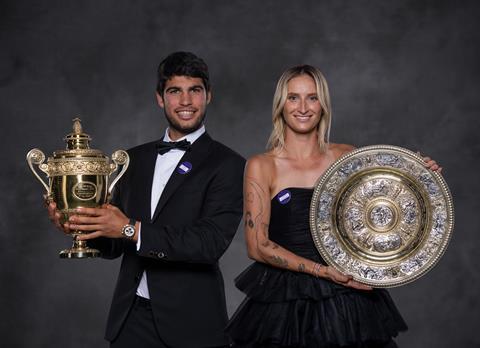Jack Edwards, account director at The Goat Agency, gives his tips on approaching social content

We’ve entered a truly epic summer of sport in Europe; special events like UEFA Euro 2024 and the Paris 2024 Olympics and Paralympics join an already packed calendar of mainstays like the French Open and Wimbledon. Nothing captures the attention of a nation quite like a major sporting event, let alone several over one summer.
Historically, our attention to these events has been fixed on the TV screen where we can watch all the action live. Over 328 million of us tuned in to the UEFA Euro 2020 Final and in the same year, the Tokyo 2020 Olympics drew in a global audience of 3.05 billion.
These mass audience figures highlight the unparalleled power of sport to unite and captivate viewers worldwide. But our attention is no longer just on the TV. According to GWI, 86% of sporting audiences now watch TV with a mobile phone, and 73% utilise social media to stay updated on news and sport trends.
Nowadays, viewership and social engagement go hand in hand. More views mean more share of voice on social platforms, and broadcasters know that their role in live sport is changing.
But it’s a summer of opportunity, with important lessons to be learned even after we’ve brought it home (here’s hoping…).
The increasing synergy of social and sport
The connection between sports and popular culture continues to grow and manifest in new and exciting ways, and social media is at the heart of this.
Recent Snapchat research explores this connection and finds that social media and online communities empower more young people to be part of sport communities. They found that 37% of young people seek out opportunities to connect with like-minded sport fans online and almost a quarter (22%) online connectivity has increased their interest in sport.
Social media is now deeply woven into today’s sports DNA and culture. Fans take to social to engage in sport-related topics and content, be part of live conversation, create content and follow the narrative beyond the action itself.
So, it’s integral that broadcasters, who have been the traditional distributors of sport content and still play a huge role in providing a global platform for sports, understand and appreciate the increasing power of social media in amplifying this content and driving more engagement.
Real-time engagement
As leaders in sports content distribution, broadcasters can and should embrace social as a natural extension of this. The most obvious link between social and sport is the opportunity for amplified real-time engagement. It’s always impressive to see the huge viewing figures the next day, but nothing can beat seeing hundreds of thousands - dare I say, millions - of people online interacting with your content, right there and then.
When a big moment occurs in a worldwide or major sporting competition, the content machine goes into overdrive as fans celebrate (or mourn) in unison. Throughout the 2023 UEFA Champions League, more than 1.7 million pieces of video content were shared across social media - garnering over 83 billion views and 8.5 billion engagements. But it’s not just the fans that can create this content, as there are strategies to capitalise on big moments beyond traditional ad breaks.
Preparing for multiple eventualities fosters connections with dedicated fans, but also generates high engagement for your content. For example, if Mbappe and Saka both stand a high chance of scoring during this Euro competition, get ready to celebrate both live and as they happen. But don’t neglect social media’s spontaneity either - preparing for the unexpected and rapidly getting content launched as events unfold can win major social media kudos with die-hard fans, and could also help you stand out from the competition.
In this sense, it’s important to trust your social media teams. Many teams spend too much time getting bogged down in approvals and strategies, and by the time a post is ready the event it was based on has passed. Trusting the right people, who are tapped into the social media matrix, is the difference between a viral post and a social media flop.
Influence and influencers
Influencers are now an essential part of the social media world, and many blur the boundaries between the social media personality and professional in their field. Sports stars like Lewis Hamilton and Tom Daley straddle the two worlds with their content and their athleticism - making them an obvious choice for advertisers to support.
But the world of influencers is broad, and creators across all sectors can have a great impact on specific communities. Take our work with Major League Baseball where we were tasked with raising the profile of sport to build its future fanbase in the UK.
Our hub influencers across the fashion, food, music and sport verticals set out to generate hype and excitement for MLB’s London Series by attending fan events and combining food and sport content in the build-up to hook their audience. And the results speak for themselves – delivering 3.1 media impressions and 2.9m media views. The proof is quite literally in the pudding when it comes to leveraging influencers to engage the right sport audiences.
This also works in the realm of smaller micro-influencers. Their small but loyal fan bases are usually brought together by their love of their unique interest, whether that’s whitewater rafting or alpine skiing. Tapping into these communities can be difficult for broadcasters without a key to unlock them - and these ‘micro-influencers’ can be that key.
Micro-influencers can help stretch marketing budgets, while also delivering higher engagement as we tend to see greater importance put on engagement rates over follower counts when it comes to authentic content like this. Audiences value genuine and relatable content when it is something they feel passionately about, like sport.
There’s also been a transition in how influencers are engaged, from one-off campaigns to professional and ongoing partnerships. These partnerships are crucial for turning the authenticity of influencers into authenticity for your brand.
The Olympic Games and UEFA Euros aren’t solely sporting events. They bleed into every corner of contemporary culture and are embedded in the cultural zeitgeist, which has made its home on social media. Now’s the moment for broadcasters to leverage social to its full potential to build a winning marketing strategy.

Jack Edwards is an account director at The Goat Agency






No comments yet